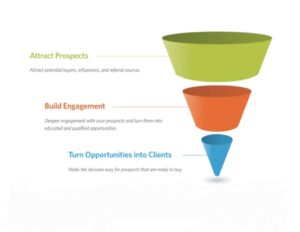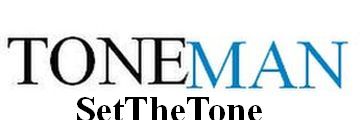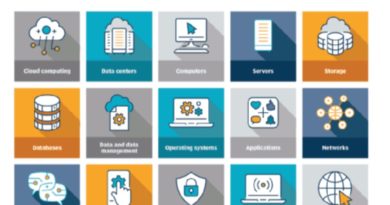Secrets of a Successful SaaS Business Development
The overarching goal of any SaaS organization is to build sustainable growth. The levers of growth are a combination of winning new business and keeping existing customers. In his notable work Predictable Revenue, author Aaron Ross outlined the engine he orchestrated at Salesforce in its early days, taking recurring from one million to one hundred million. That model is a template used by many organizations today, primarily because it’s logical, scalable, and often quite effective. We’ll outline the framework as part of our journey through the secrets of a successful business development representative.
Roles in SaaS Business Development
The ideal team includes a few key roles. With a small “pod” of sales people, leads can be generated, contacted, qualified, demonstrated to, and nurtured.
Sales Development Representative (SDR)
A sales development representative (SDR) is a member of the inside sales team. SDRs primarily focus on outbound prospecting, qualifying leads, and adding leads to the sales pipeline. While SDRs don’t close deals, they help sales reps by determining if a lead will be an ideal customer fit.
Business Development Representative (BDR)
A business development representative (BDR) tries to generate new business opportunities by qualifying leads and working with existing accounts to find potential buyers. A BDR typically uses email, cold calls, social media, and networking. The real goal is to book appointments that lead to sales opportunities. Once a meeting is booked, the BDR passes the prospect off to an Account Executive.
Account Executive (AE)
An account executive (AE) is a SaaS sales team member focused on closing deals, bringing in revenue for the business. They build relationships with prospects and work to fit the company’s SaaS solution to the prospect’s needs. Demonstrating the SaaS product, writing proposals, and closing deals are all the purview of an AE.
Business Development Manager
Oversight of the team and process belongs to the business development manager. The actual job title varies, but the goal is to build sales teams in these small groups, develop the talent, and close as much business as possible.
Tasks in SaaS Business Development
Lead Generation
Marketing campaigns are supposed to deliver many leads to the top of the sales funnel. Inbound leads, however, may not be sufficient, so outbound campaigns are also needed. Some sales organizations specialize SDRs on inbound versus outbound (farmers vs. hunters!). The objective in lead generation is higher volume with building market awareness.
Lead Qualification
Not every lead is a good one — so qualifying leads early is paramount. That is, making sure the lead has purchasing authority (or at least strong influence), there’s pricing alignment, and there’s product/need fit saves valuable time. Finding out that the prospect has no budget after the third demo is no fun. Ideally, the SDRs know how to tacitly glean the qualifying data without sounding sales-y.
Lead Nurturing
An old adage we use is “people buy when they’re ready to buy, not when you’re selling”. As part of the qualifying process, finding the timeline helps. If the timing is off, it’s not the end. A sustained nurturing campaign, with periodic emails and occasional phone check-ins, can win business later. Nurturing should lean more on education and social proof than selling. Giving value beats sales chatter any day.
Crafting Offers
Perhaps your pricing model is simple — flat monthly fees, no setup costs, no add-ons. But if it isn’t, it’s a sales task to craft enticing offers. Bundles & upgrades are better than discounts. Again, giving value is always preferred, beating out chopping prices (and appearing desperate).
Closing
The scorecard is mostly about revenue, of course. Closing deals (using well-crafted offers) matters. A good AE knows how to ask for the deal. And then a good AE knows how to get the signature and payment. You can’t Always Be Closing — deals happen when the client understands the deal and recognizes how your SaaS solves their problems. Closing is an art.
Reporting
Good SaaS business development teams know their metrics. They share data to improve the sales process. Where did the lead originate? What were the pain points? How long was the sales cycle? What are the metrics of the deal (users, recurring revenue, one-time revenue, cost of acquisition)? Solid results reporting enables optimization and enhancement over time in the quest of predictable revenue and growth.
Experimenting
Ah, our favorite part. What works for Salesforce or Slack may not work for you. To grow faster, you have to try different ideas. You build a campaign around lead magnets that adds hundreds of unqualified leads. #fail. You run a series of webinars that double new revenue in a month. #winning. We prefer a blurry line between sales & marketing — silos suck, feedback loops win. An experimental framework, with ideation, metrics, and execution, can deliver far faster growth.
Communicating
Sharing lessons learned and metrics internally builds great trust. That transparency also helps the organization iterate. Failure isn’t shameful in this environment — it is merely knowledge.
Traits of Successful SaaS Business Development Programs
Agility
Processes are executed, reviewed, and iterated regularly.
Transparency
Teams share information, avoiding silos of data and communication.
Integrity
Customers and employees are trustworthy and do what they say.
Resilience
When things go wrong, it’s seen as a learning opportunity, not a disaster.
Innovative
New ideas are shared and discussed as teams experiment.
Thorough
Processes drive action, with regular reviews to improve them and fill gaps.
Secrets of a Successful SaaS Business Development Manager
Business development in SaaS should be designed to scale up. In the beginning, a SaaS business development manager could be (and probably is) one person. When the product is ready to reach a bigger audience, you can start adding a role at a time. A good SDR can start filling the funnel. An account executive helps demonstrate and close. A BDR fills in more business (you can promote your first SDR too!). As business continues to grow, you can add a whole pod. Over time, you can even build specialized pods around vertical markets (e.g., government, healthcare, SMBs). The more teams collaborate and share, the better the chances for finding winning messaging, building better processes, and reaching a better, bigger audience. Iteration and experimentation should be embraced — as the saying goes, what got you here won’t get you there. The very notion of SaaS is to innovate, and that should permeate business development too. A strong SaaS business development manager will build a team and processes that support it, leading to higher growth in the long term.
Tony leads engagements for large multi-national publicly traded and early-stage venture back start-up companies
He is responsible for Business and Sales Development in (SaaS) software technology and knowledge-based sectors. Tony is based in Rochester, New York and provides strong support for Europe, Canada, and US clients. With results-oriented and a focus on detail-tactical planning breaking down a long-term strategic plan into smaller and more distinct short-term plans, increase a company’s revenue by identifying new markets, recommending marketing strategies and building relationships with investors and other stakeholders.
Today’s stiff competition, proliferating channels, shrinking attention spans and rapidly changing markets are just a few factors making it challenging to maintain a solid understanding of the needs and behaviors of target audiences while carving out a unique market position and effectively communicating value. These obstacles tend to complicate the journey toward a powerful B2B marketing strategy.
As your B2B development representative for a new era of innovation, I recognizes these hurdles and have built solutions to surmount them. I’m here to confidently traverse market dynamics with you, growing my collective knowledge together as I go—but even more than that, I’m here to make sure your company leads the way in your industry. With my strategic sales and marketing background, I’ve facilitated a seamless alignment of of marketing efforts to your business objectives, ensuring every action taken is measurable and serves a purpose in achieving your vision.
I have enjoyed many experiences as a Business Sales Development professional focusing on SALES having the opportunity to find new clients through Go-To-Market Strategies utilizing outside resources ‘knocking on doors’ ‘pounding the pavement’ end results setting up product demos with Managing Partners and Account Executives to close the deal.
Business Sales Development Representatives are responsible for starting conversations with a list of target accounts and/or contacts in your database, verifying the prospects are encountering the problem your solution solves, educating them on how your solution helps them overcome that specific problem, and ensuring they meet specified qualification criteria before handing them off to an Account Executive.

Business Sales Development Representatives (BSDRs = xDR/Go-to-market advisor) typically have the following responsibilities:
How to create an Ideal Customer Profile (ICP)
An example Ideal Customer Profile
- List Building: Once you have an ICP identifying new sales prospects by researching target companies to identify contacts that match target buyer personas, clean contact data for accuracy, and enrich contact details.
- Outreach Activities: A conversation guide to engage with prospects and leads through cold calling, emailing, social networking, and other outbound communication methods.
- Educating & Nurturing: Educate prospects about the product or service and nurture those relationships until they’re ready to meet with an Account Executive or Sales Representative.
- Appointment Setting: Set up meetings or calls between “qualified leads” and Account Executives or Sales Representatives.
- Data Management: Manage and update customer data in CRM systems, ensuring all information is accurate and up to date.
- Follow-Up: Follow up with potential leads that have been identified but not yet converted.
- Collaborate with Marketing: Collaborate with marketing teams to optimize lead generation efforts, share feedback from potential customers, and ensure alignment of sales and marketing strategies.
- Meeting Sales Targets: Meet and exceed performance targets (ex. number of qualified meetings set).
While the core responsibilities of a Sales Development Representative (SDR) would generally remain the same even in a remote setting, there might be some additional considerations or adaptations in their tasks:
- Self-Management: Exercise self-discipline and time management skills to ensure optimal productivity.
- Virtual Communication: Use various digital communication tools for reaching out to prospects and leads as well as for communication with the internal team.
- Tracking & Reporting: Consistently track and report activities and progress to supervisors in order to provide visibility into your work.
- Learning & Development: Proactively seek out learning opportunities and training.
- Building Remote Relationships: Find effective ways to build relationships with potential customers in a fully virtual environment.
- Technology Management: Ensure you have a stable internet connection, a quiet work environment, and understand how to troubleshoot basic tech issues on your own.
- Maintaining Team Connection: Make an effort to stay connected with your team and maintain a sense of camaraderie and team cohesion in a virtual environment.
Remember, the role of an SDR can vary depending on the organization, industry, and product or service being sold.
Also, having a Customer Experience plan in place is significant to my success.
- Currently have a formal (ICP) Individual Client Experience plan in place
Employing a robust ICP or Individual Client Experience strategy to drive revenue must be implemented to generate revenue. The drive to develop Client Experience plans may very well be marketing-driven.
Client Experience lies in the purview of my marketing sector. Certainly, marketing plays a crucial role in Client Experience as does business development, project delivery, and negotiation. Every single interaction I have with a “client” – including the interactions before an organization becomes a client, and the ongoing communications with them after the project completes.
Mapping the Client Journey
This is known as the client journey, and a highly-effective component of any Client Experience strategy is mapping the journey a client takes with me. How are they interacting with me? What actions are they taking? What is driving those actions? What are the underlying emotional drivers that may be impacting the things they are saying and doing? What are the pain points they happen to be experiencing at each step in the process? And finally, how can I add value to every interaction? After all, if I am not adding value, what is the purpose of the interaction? How is it worth the client’s time and attention?
To understand Client Experience, you really need to understand the journey first. And one size does not fit all when it comes to a client’s journey with me. Every client has a slightly different journey, and the differences between market sectors / verticals may be significant.
Journey mapping is just one element of an effective Client Experience strategy. More holistically, the “experience” is the total of each and every interaction – in-person, telephone, email, social media, website, networking events, etc. For instance:
- If a client requests a piece of information, and I don’t meet their expectations for timeliness, I’ve created a negative experience.
- If the sales representative (internal) or customer (external) in the field is awaiting an RFI from the data scientist or data architect regarding technology power or platform capacity, and the data scientist or data architect is not timely in the response, there’s been a negative experience.
- If your project manager is having a bad day or is overly-stressed or simply didn’t get enough sleep, this could “leak,” which means that he or she may be curt with the client, or something worse, creating a negative experience.
Research from PWC found that in the United States, across all industries, 17% of customers will leave after a single negative experience, while 59% will leave after a few negative experiences. (Globally, 1 in 3 customers will leave after a single bad experience.) Why should I care about this? Buying behaviors between products, services, and professional services are increasingly becoming aligned.
Furthermore, the competitive environment is not easing. M&A activity brings mega firms across your town or street. Unhappy employees leave and take clients with them. Entrepreneurial professionals launch new firms with lower overhead and new ideas (and maybe some of your clients). All the while client loyalties are changing – perhaps your primary contacts are retiring, or purchasing departments are now requiring three “bids” after years of just handing your work.
In other words, it ain’t getting any easier to keep clients coming back again and again.
New business development is critical to firm growth. However, too often Technology or Medical firms focus all their efforts on landing new business, and not enough resources toward turning their existing clients into happy, raving fans.
Client Experience Strategy
If I want to maintain a market share, much less grow, it is imperative that I dedicate time and resources toward creating positive Client Experiences with each and every interaction. To do that, develop strategy around the many elements of Client Experience, some of which include:
- Conducting client research (qualitative and quantitative)
- Creating client journey and empathy maps
- Building strategy around specialized focus areas
- Developing ideal client profiles
- Understanding my clients’ clients by gaining advanced industry knowledge
- Gaining in-depth knowledge of every client
- Implementing Account-Based Marketing (ABM)
- Revisiting my project management practices
- Developing client onboarding programs
- Improving communications among team members and with my clients
- Integrating my technologies with the technologies my clients prefer
- Increasing the engagement of team member, sales and marketing
- Innovating and diversifying to respond to client and marketplace needs
- Training staff how to be better communicators, creative thinkers, and emotionally-intelligent professionals
- Aligning my marketing and brand with the “real you” — clients expect the marketing hype to be true: is it?
As you can see, Client Experience strategy goes far beyond marketing and really permeates everything I do. As I look over this list, can I truly say that I am regularly addressing and improving these items? Or do I merely pay them lip service or, even worse, totally ignore some of these areas?
The PWC research previously referenced found that Client Experience will soon be the single most important sales and marketing strategy among Technology and Medical firms, more important than networking, thought leadership, branding, and personal selling. I can be sure that my competitors are looking at ways to improve their Client Experience strategies, which in turn will make them a more attractive option when they come for my clients. Make no mistake: they are coming. Will I be prepared?
How are you addressing Client Experience strategy at your firm? What other elements to you consider part of Client Experience? Drop me a note – I’d love to hear about it!
Secrets of a Successful SaaS Business Development Representative





